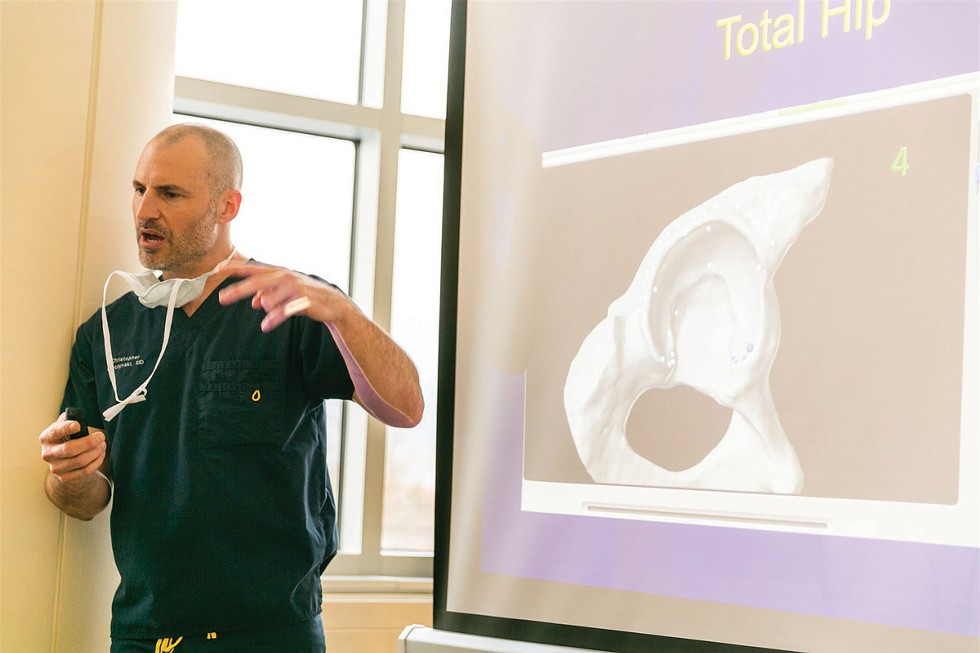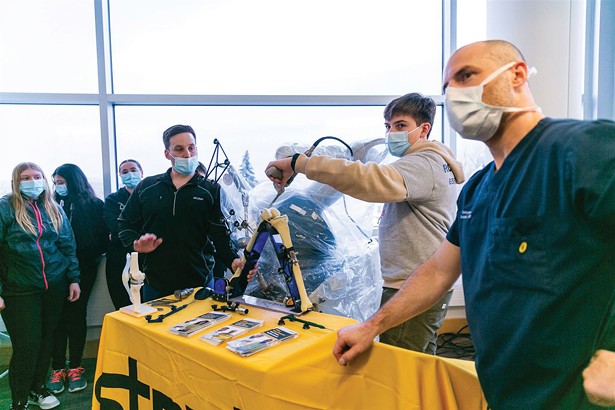Anyone who has encountered joint pain as they have aged knows how valuable freedom of movement truly is. From the grandparent who wants to keep up with rambunctious little ones to the avid runner who isn't ready to put away their sneakers, joint pain and stiffness can quickly begin to chip away at the enjoyment of the day-to-day. For some people, the most viable path toward regaining quality of life is joint replacement surgery, a procedure that has jumped lightyears ahead in the last decade thanks to state-of-the-art medical technology.
At Columbia Memorial Health (CMH), for instance, the use of the Stryker Mako—a robotic arm programmed for precision-based assistance in the operating room—allows surgeons to perform highly personalized procedures that meet a patient's individual needs. Dr. Christopher Gorczynski, MD, an orthopedic surgeon who has been in practice at CMH for 18 years, recently performed his 1,000th robot-assisted joint replacement surgery with the help of this cutting-edge tool and has seen firsthand the difference the technology makes in improving his patients' lives.
"When it comes to total knee, hip, or shoulder replacements, the instruments and alignment techniques haven't changed much in 20 to 30 years," Dr. Gorczynski explains. "But when robotics and computerized programs came along, it allowed us to highly customize operations for every individual patient. The Stryker Mako Robot is a sophisticated planning tool in the operating room that allows us to make sure that every surgery is matched exactly to that patient's unique anatomy."
The increased precision of the robotic arm allows CMH surgeons to preserve healthy bone and optimally balance soft tissues, resulting in easier recovery and rehabilitation, and a more normal feeling, longer-lasting prosthesis. This type of individualized care has become even more important as the number of surgeries has increased in recent years, largely due to the aging Baby Boomer generation. "We're seeing an increase in joint replacement needs and that number is only expected to continue growing. My practice is focused on meeting this need to make life easier for a growing number of people," Dr. Gorczynski says.
For those who are considering joint replacement surgery, Dr. Gorczynski suggests speaking with their healthcare provider about the best option. "The decision to undergo surgery is a big deal for patients, and it's normal to have questions," he says. "It is important to find a surgeon who not only does a high volume of these procedures, but who also will follow up with them after the operation. It's important that our patients feel supported from the initial decision for surgery until they are fully rehabilitated."
"Individualized care is fundamental. Some patients tolerate non-operative treatment for years, while others prefer to proceed more rapidly to surgery, feeling that if it is inevitable they would prefer to just get it done. I enjoy working with patients as we make these decisions together," Gorczynski adds. "After surgery, it is very rewarding as a surgeon to see patients rapidly progress from using a walker to resuming activities they stopped because of their diseased joint. We continue to follow-up with patients at five year intervals. It is great to hear how their new joint has improved their quality of life—they're playing with grandkids, going on trips, exercising. We're seeing results like this day after day."













